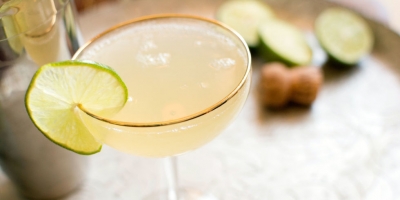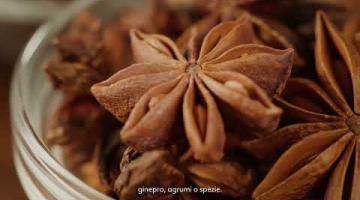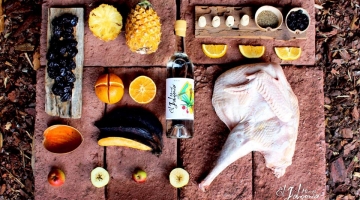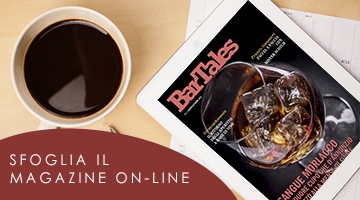1. The Daiquiri was not created by a Cuban. An American engineer named Jennings Cox invented the recipe around 1900.
2. There are five versions of the classic daiquiri and none have strawberry: Daiquiri #1 or Daiquiri Classico (Rum, Lime, Sugar), Daiquiri #2 (Rum, Orange Curacao, Orange Juice), Daiquiri #3 (Rum, Lime, Maraschino Liqueur, Grapefruit Juice, Sugar), Daiquiri # 4 (Rum, Lime, Sugar, Maraschino Liqueur), Daiquiri # 5 (Rum, Lime, Grenadine, Maraschino Liqueur, Sugar).
3. The combination of rum, lime and sugar has been around before the Daiquiri; Ti Punch (French Agricole rum, lime wheel, and sugar syrup), Caipirinha (cachaça, limes, raw sugar), Medford Sour (New England style rum, lemon juice and simple syrup). It was Carta Blanca Style that defined the drink.
4. What defined the Daiquiri was the use of Carta Blanca Rum (Cuban aged and filtered) which was new at the time of the drink's inception.
5. The Hemingway Daiquiri was originally a frozen drink.
6. Hemingway drank his daiquiris by the double earning the nickname "Papa Doble" with a record of 16 doubles in one sitting.
7. The Daiquiri was introduced to America when it was served at the Army & Navy Club in Washington, D.C. in 1909.
8. The Daiquiri and rum cocktails became popular during World War II when grain rations restricted whiskey and beer.
9. The drink is named after a beach in Santiago, Cuba.
10. Bartender David Embury, in the 1948 "The Art of Mixing Drinks," lists the Daiquiri as one of the six basic cocktails to master, along with the Martini, Manhattan, Jack Rose, Old Fashioned, and Sidecar.
11. John F. Kennedy drank them even after the embargo.
12. Fredo Corleone drank Banana Daiquiris.
13. The first Daiquiris were served over ice.
14. The "Daiquiri Time Out" started in Boston as a way to push through life many challenges or reset the palate.
15. The "Snaiquiri" began in Austin, TX as a shift drink in the cocktail community and is a miniature drink.
16. National Daiquiri Day is July 19.
17. Purists say that granulated sugar should always be used instead of simple syrup.
18. The Cuban pronunciation—which we at T&C like to honor—is "dye-ker-ree."
OUR DAIQUIRI EXPERT—AND THE RUM HE CREATED SPECIFICALLY FOR THE COCKTAIL
When the three bartenders who launched the cocktail-focused spirits company The 86 Co. set out to make a rum, they wanted to recreate the type of rum that inspired classic drinks like the daiquiri, the mojito, and the Cuba Libre.
Co-founders Simon Ford (who was the first bartender to cross over to the corporate side of the spirits industry as a brand ambassador—for Plymouth Gin), Jason Kosmas (below) and Dushan Zaric (founders at NYC's Employees Only and authors of the book Speakeasy) chose that path after asking their industry friends what they thought was missing in the rum category and hearing the nearly universal response that bartenders wanted "a true, Carta Blanca, Cuban-style, aged and filtered rum."
Carta Blanca rum—a category that Havana Club, which is unobtainable in the U.S., falls into (it was also the first style of Bacardi)—works so well because it's very dry and has strong grassy, vanilla, and citrus notes, Kosmas says.
"The English they have this tradition of using blackstrap molasses, the kind of stuff you have it in your cabinet at home, and they tend to age it so it's very heavy. On the other side you have the French; they make agricole and the result is very vegetal and more brandy-like," he says. "Carta Blanca is kind of in the middle."
The Carta Blanca decline happened gradually, starting in the 1960s and 70s, he says, when people wanted lighter, less flavorful spirits. The Cuban embargo also limited access to rum. Vodka took over.
"For me, that style of rum is a piece of cocktail archaeology," Kosmas says. "We're resurrecting it."
Determined to bring it back, Ford traveled to the Savoy, the world-famous hotel bar in London, to sample Cuban rums dating back to the 1920s from legendary barman Harry Craddock's library of spirits. Then, after meeting with 11 distillers, the team was connected to Francisco "Don Pancho" Fernandez, a master distiller who had mastered the Cuban method for making rum during his 35 years as the Cuban Minister of Rum before he moved to Panama.
They convinced Don Pancho to work with them and he gave the three-year aged rum its name: Caña Brava, the slang term for the aggressive wild sugar cane found in the distillery's Herrera region of Panama.
We suggest finding a bottle of the rum ASAP and mixing yourself a daiquiri classico (below):
2 oz. Caña Brava Rum
1 oz. Fresh Lime Juice
.5 oz. Rich Simple Syrup (2 sugar:1 water)
Directions
Shake ingredients with ice and strain into a cocktail glass. Garnish with a lime wheel.
thanks to:http://www.townandcountrymag.com/leisure/drinks/a3218/daiquiri-cocktail/
















